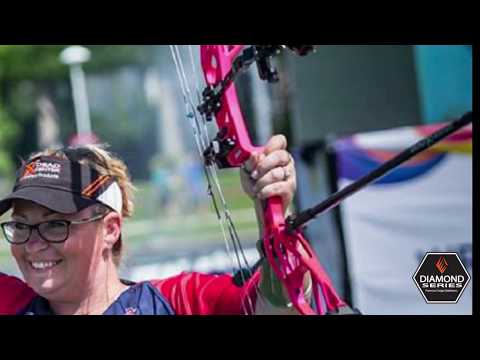Bow Stabilizer : Your Ultimate Overview to Improved Archery Precision
Bow Stabilizer : Your Ultimate Overview to Improved Archery Precision
Blog Article
Maximize Your Archery Precision With These Bow Stabilizer Methods
One essential component that can significantly impact your efficiency is the proper utilization of bow stabilizers. Whether you are an experienced archer looking to improve your abilities or a newbie excited to enhance your precision, understanding these bow stabilizer strategies can be the secret to striking your mark with unparalleled uniformity.
Benefits of Using Bow Stabilizers
Making use of bow stabilizers can significantly enhance an archer's precision and overall efficiency by minimizing bow torque and vibration. Furthermore, bow stabilizers wet vibration, which not only improves the comfort of shooting yet additionally prevents the bow from jumping upon launch, therefore assisting in preserving proper goal.
Additionally, bow stabilizers can help in holding the bow stable, especially during gusty problems or when shooting from longer ranges. The included weight at the front of the bow gives stability and equilibrium, permitting the archer to concentrate on aiming without the disturbance of bow movement. Overall, the benefits of making use of bow stabilizers extend beyond just accuracy, enhancing the archer's experience and performance in different shooting scenarios.
Choosing the Right Bow Stabilizer
Choosing the ideal bow stabilizer is essential for optimizing your archery equipment and enhancing shooting efficiency. When choosing a bow stabilizer, there are numerous aspects to take into consideration to guarantee you discover the best suitable for your demands. Take into consideration the weight of the stabilizer. Heavier stabilizers can help in reducing bow torque and absorb even more vibration, resulting in a steadier aim. Lighter stabilizers provide more ability to move, which can be helpful in particular shooting situations.

Finally, take into consideration the design of the stabilizer. Some stabilizers include flexible weights or dampeners that allow you to personalize the equilibrium and feeling of your bow. Ultimately, selecting the appropriate bow stabilizer involves finding an equilibrium in between weight, style, product, and size to enhance your shooting accuracy and general efficiency.
Correct Installation Methods
To make certain optimum efficiency and safety and security in archery, understanding proper installment strategies for your bow stabilizer is crucial. The initial action in setting up a bow stabilizer is to determine the appropriate placement on your bow.
Next, securely attach the stabilizer to the bow making use of the ideal placing hardware. It is important to tighten the stabilizer snugly to stop any kind of tottering during shots. Some Click This Link stabilizers come with flexible weights that can be included or eliminated to adjust the equilibrium of your bow. Experiment with different weight configurations to locate the optimum equilibrium that fits your shooting design.

Changing Stabilizer Weight and Size
After making sure the correct installment of your bow stabilizer, the following step involves adjusting the weight and length to maximize its efficiency in improving archery accuracy. The weight of the stabilizer plays an important function in reducing bow activity throughout the shot cycle.
When it comes to stabilizer length, discovering the he said appropriate equilibrium is crucial. A longer stabilizer can provide greater stability by boosting the range in between the bow and the weight at the end of the stabilizer. This included distance improves the stabilizing result, specifically in her comment is here windy conditions or when contending longer ranges. On the other hand, a shorter stabilizer supplies more maneuverability and might be chosen by archers who value dexterity and fast movements during capturing.
Advanced Stabilizer Tuning Tips
Attaining ideal bow stability and precision in archery requires a nuanced method to advanced stabilizer adjusting. Advanced stabilizer adjusting involves fine-tuning numerous parts to boost the bow's equilibrium, decrease resonance, and improve overall accuracy. One vital strategy is to explore various stabilizer arrangements, consisting of back-bar and side-bar configurations, to find the optimal balance between security and ability to move for your shooting style. bow stabilizer. In addition, adjusting the angle and positioning of the stabilizer can have a significant influence on exactly how the bow responds upon release.
An additional critical facet of sophisticated stabilizer tuning is enhancing the damping homes of the stabilizer system. Checking out different products for the stabilizer building, such as carbon fiber or aluminum, can also affect the bow's efficiency by altering its weight circulation and rigidity.
Final Thought
In verdict, optimizing archery accuracy can be attained with the correct choice, installation, and modification of bow stabilizers. Overall, integrating bow stabilizers into archery method can lead to better performance and raised accuracy.
Utilizing bow stabilizers can considerably boost an archer's accuracy and general efficiency by reducing bow torque and resonance. Longer stabilizers offer higher security and balance, particularly for long-distance capturing, while much shorter stabilizers offer even more versatility and are simpler to steer in tight areas (bow stabilizer). Carbon fiber stabilizers are long lasting and lightweight, while aluminum stabilizers are durable and give excellent vibration moistening
A longer stabilizer can give greater stability by raising the distance between the bow and the weight at the end of the stabilizer.One more critical aspect of advanced stabilizer tuning is enhancing the damping buildings of the stabilizer system.
Report this page